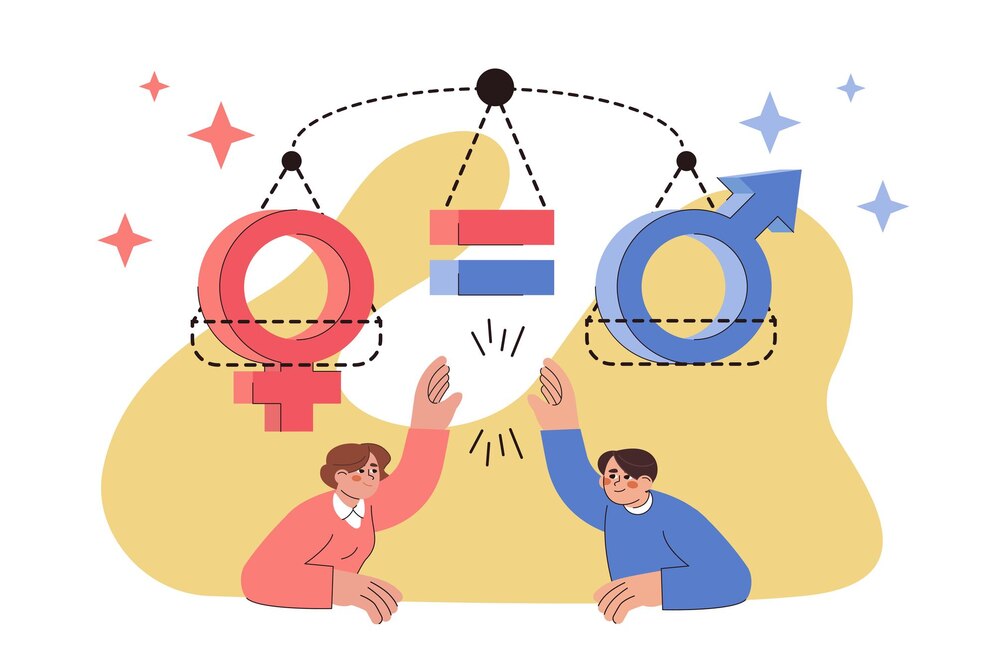By Carmen Chang,
Linguistic sexism: lexical aspects
This problem is also reflected in the use of lexicon and phraseological forms that discriminate, disparage, and offend women, such as generic terms. This occurs, for example, with the use of generic or collective nouns that exclude and invisibilize the female gender, or of those terms that have a pejorative or discriminatory meaning towards women. Héctor Velis-Meza (2020: 149) gives as an example a particular case that evidences the distinctive traits of superiority and inferiority inherent in certain terms that present very different connotations in men and women:
“Every time you use the word assistant, you think of a professional who reinforces his duties to an executive of some importance. This adjective, which can also be used as a noun, comes from the Latin word assistere, which is to remain detained (in the sense of static, without moving) with someone. From this definition the main meanings of this word are inferred: that of being next to a person to support him in his task or…that of being present. So far so good, except that in the tenth meaning of this word of a total of fourteen, it is said that in Spain, la asistenta is the woman who performs domestic tasks (cleaning, order, food, ironing) in a house, in which does not reside and which charges per hour. In other words, el asistente is always assigned to high professional functions and la asistente could end up cleaning the bathrooms”.
Sandra Roubin (2017: 20) explains in the analysis “Sexism in the French Language”, how the use of the lexicon also tends towards linguistic sexism and suggests a modification in dictionaries and grammars: “We also shed light on semantic asymmetries and the extent of vocabulary that can devalue women. In this regard, we recommend the removal of sexist quotations from dictionaries and grammars”.

One of the most prominent cases when speaking of linguistic sexism is the use of the generic man, which can acquire different meanings: first, it would have a generic sense when it refers to all humanity and, secondly, a specific meaning when referring to the masculine gender. For example:
- “El perro es el mejor amigo del hombre”. “The dog is man’s best friend”.
- “La discoteca estaba llena de hombres”. “The club was full of men”.
Man interjection can also be used to express wonder, anger or surprise, in a general way, even being used when talking to someone of the female gender, something that does not happen in the reverse situation. For example: “¡Venga, hombre! Come on, man!” can be used to express anger or encouragement to men and women; it’s not the same with “¡No lo tomes a mal, mujer! Don’t take it the wrong way, woman!” which is a phrase that could be directed solely and exclusively towards women.
In the case of the labour sector, language has had to adapt to the incorporation of women into many professions that were previously exclusive to men, and this has involved adjustments in the lexicon:
“Today no one is surprised to hear about the minister, everyone understands that the doctor is a woman who practices medicine and not the woman of the doctor, and any self-respecting public discourse begins with a ladies and gentlemen, citizens, candidates and candidates… Legal equality between men and women and the massive incorporation of women into all public and private spheres have changed the way of speaking, have feminized many terms referring to trades, positions and professions and have forced expressive changes in formal and politically correct language. However, it is enough to listen with intention to any everyday conversation -whether banal or professional-, to discover that the usual language is full of expressions and structures that at best perpetuate stereotypes that harm or make invisible women and at worst denigrate them.”
It is striking the case of the courtesy treatment’s “señor”, “señora” and “señorita”, behind which clearly hides a machista reality, since the man does not need to marry to be a “señor”, but the woman can only access the status of “señora” through marriage. A woman’s treatment is then defined by her relationship with the man and not by herself, but this is not the case for men. According to the DRAE:
“refers to the ‘courtesy treatment given to female teachers or many other women who perform some other service, such as secretaries or employees in administration or commerce’. However, we are again faced with a lexical vacuum, since there are no equivalent ways of treating a teacher, administration employees or male commercial employees. Therefore, the use of a señorita is discouraged, which in the institutional sphere should not be used as a treatment for female teachers, professors, secretaries, and employees of the administration”.

For example, in the Anglo-Saxon world, courtesy treatments “Miss” and “Mrs” were eliminated by the neutral “Ms” so that there was equal treatment between men and women, with respect to their marital status.
Another case of linguistic sexism would be the relations of dependence, that is, those situations in which the woman is presented in relation to a man and not by herself: “esposa de = wife of, mujer de = woman of, novia de = girlfriend of, señora de = lady of y viuda = widow of”. Other asymmetries also occur at the time of treatment, for example, when a sexed name is made, as can be seen in the following case: “Los bomberos y las mujeres bomberas… Firefighters and women firefighters…”
As for fixed expressions and formulas, we can also find quite evident cases of linguistic sexism, as we will see in the following examples. A suggestive case is that of the concept of golden bachelor, which has a positive connotation, which refers to a “soltero de oro”, coveted man, in contrast, the derogatory term of “solterona”, spinster refers to women who have a certain age and have not yet married, implying it’s a negative. Another interesting example is that of “hacerse un hombre”, becoming a man, which involves reaching maturity and reaching adulthood, while “hacerse una mujer”, becoming a woman implies reaching the reproductive stage having had the first menstruation. Another similar case is that of the phrase made “comportarse como un hombre”, behave like a man, which is associated with courage and physical strength, while “comportarse como una mujer”, behaving like a woman refers to virtues such as decency, honesty and discretion.

To this we can add what the author Sandra Roubin (2017: 11) argues, in the article “Sexism in the French Language”, where she refers to the case of the sexed and sexist vocabulary of the French language:
“The French vocabulary is strongly sexed and conveys many sexist prejudices against women. These are revealed in a particularly edifying way in semantic dissymmetry’s. The semantic asymmetries come from ‘the inequality of meaning between a masculine word and its feminine. The word feminine has a pejorative, negative or downright degrading nuance while the masculine wants to be neutral or noble.’ For example, un gars a guy is a boy; une garce a bitch is a woman of bad life”.
Finally, Claudine Baubino (2006: 189) highlights that the use of feminine lexicon related to women’s activities favours professional equality:
“At the beginning of my research, the controversy of 1984, triggered by the creation of a terminology commission relating to vocabulary concerning women’s activities, was my main subject. Included in the system for professional equality, the feminization of names was considered a tool to fight against sexism”.
References
- El sexismo que ocultan las palabras. LA VANGUARDIA. Available here
- Le sexisme dans la langue française. agir par la culture. Available here
- María Márquez. Género gramatical y discurso sexista (Perspectiva Feminista). Editorial Síntesis, S. A. Madrid. 2013.
- Diccionario panhispánico de dudas. Real Academia Española. Available here
- Instituto Cervantes. Guía de comunicación no sexista. LENGUA VIVA. Queensbridge. 2021.
- Leopoldo Valiñas and MÁRQUEZ María. La Evolución del Lenguaje (1a parte). Editorial Síntesis. Madrid. 2013.
- Le sexisme dans la langue francaise. FSP. Available here




